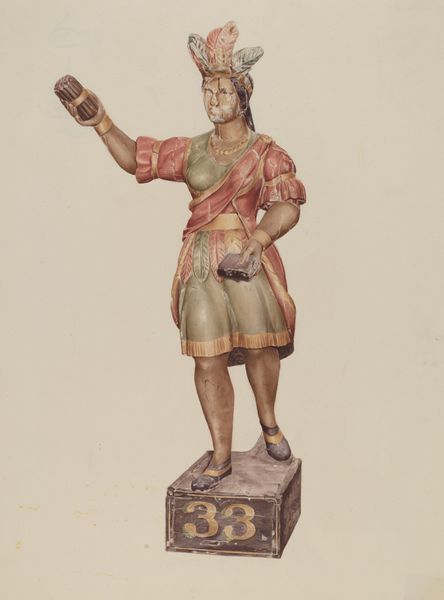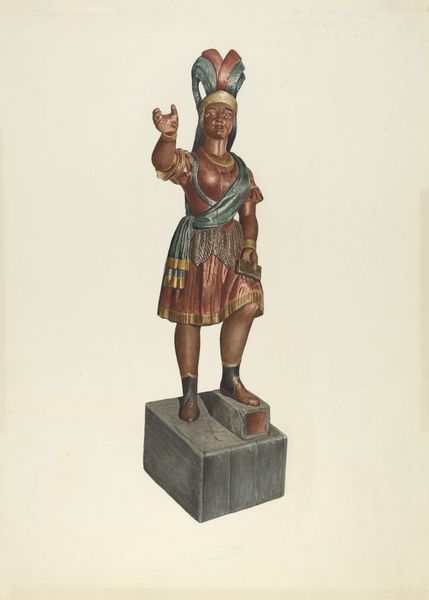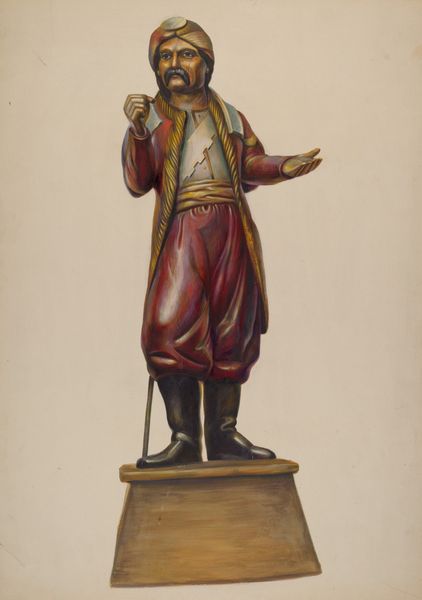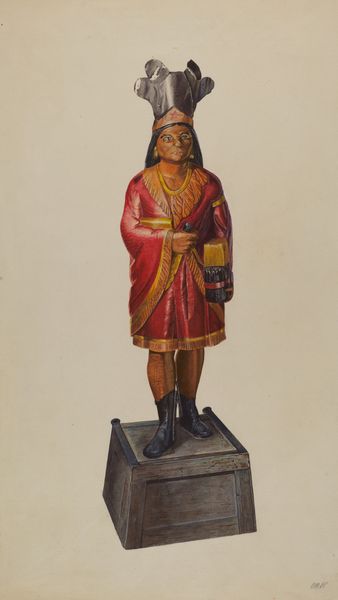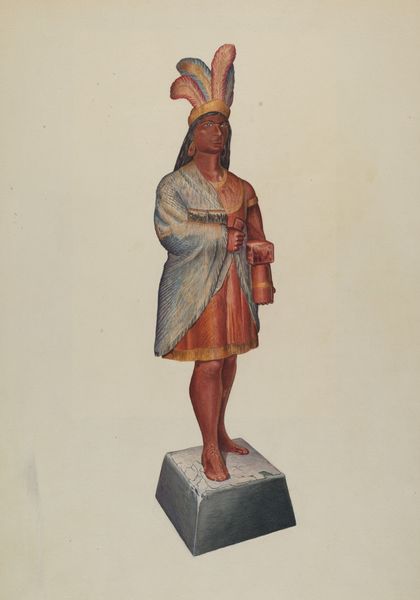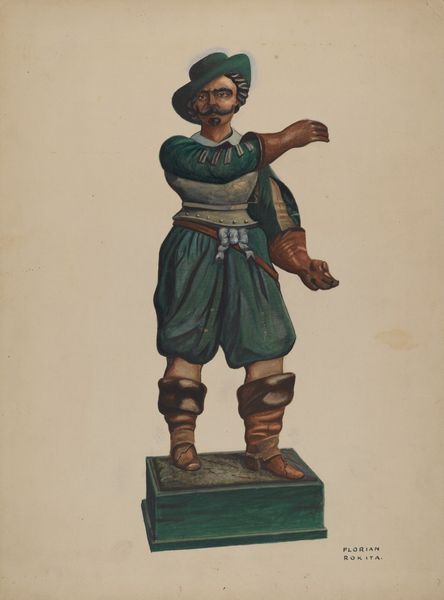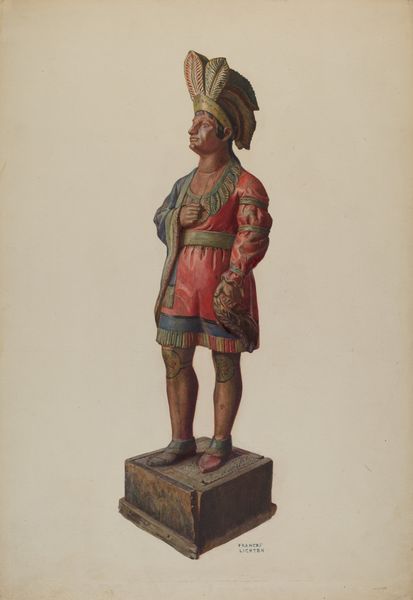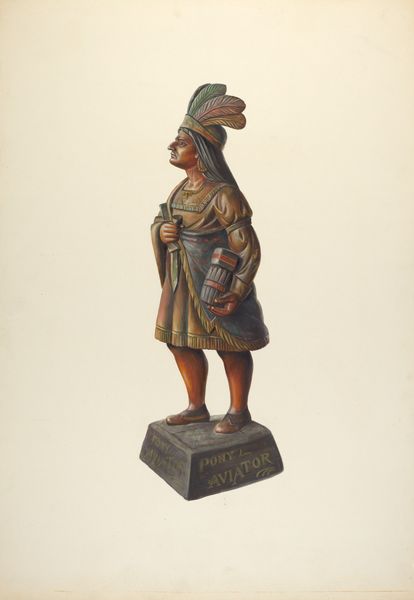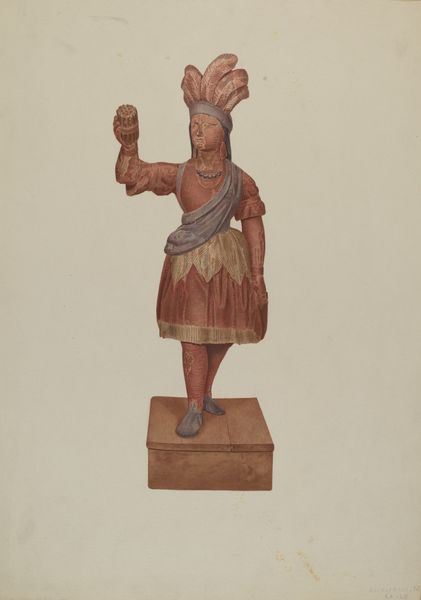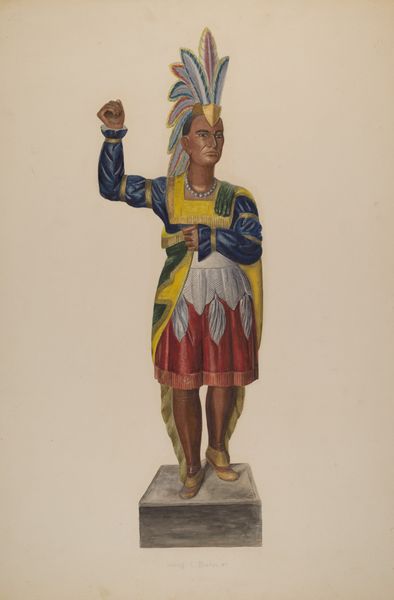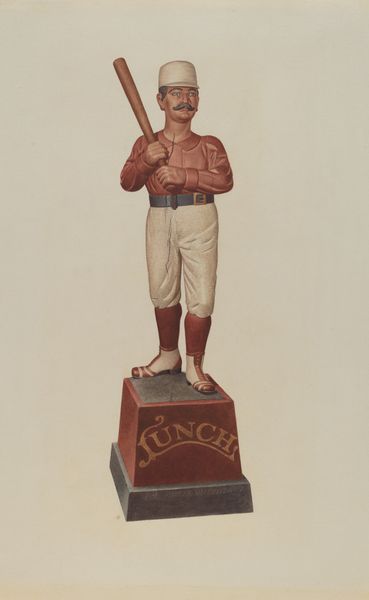
drawing, watercolor
#
portrait
#
drawing
#
caricature
#
watercolor
#
academic-art
#
watercolor
Dimensions: overall: 48.9 x 36.1 cm (19 1/4 x 14 3/16 in.) Original IAD Object: 36" high
Copyright: National Gallery of Art: CC0 1.0
Curator: So, let's discuss "Tradesman's Sign," a watercolor and ink drawing, dating from around 1939, by Beatrice DeKalb. Editor: It's charmingly… awkward. The figure's proportions are off, and his stance is rather stiff. Almost as if he's perpetually waiting for something to happen, the material representation giving an idea of someone trapped in a role. Curator: Absolutely, I think that awkwardness contributes to its historical resonance. Given the date, we need to contextualize this as an image created during a period when the market for traditional trades were experiencing dramatic social and financial upheavals. What was this man selling, what kind of cultural identity was being leveraged, and what specific social role was he trying to occupy in that moment? Editor: The artist's decision to render him in watercolor gives him an appealing, yet slightly fragile quality. It's interesting how a 'sign' meant to project an image of confidence becomes vulnerable when seen in a gallery context so long after. Watercolor on paper also demands attention to process - it's unforgiving. Did DeKalb work quickly or methodically, how many attempts? What paper was chosen, what dyes composed each individual color, how was the pigment dispersed on the paper to emphasize its shape? The details are important. Curator: And, importantly, what narratives are being sold. Note the almost theatrical Scottish attire. The kilt, the feathered cap... It's a staged presentation of identity intended to conjure certain associations of industriousness. Is this sign a cultural signal and an open comment regarding ethnicity, tradition, and the allure of a perceived heritage within a changing capitalist landscape? I wonder, in that setting, if a deliberate commodification of ethnic and cultural identity would feel as alien as the current day to day practice? Editor: It's a layered presentation. The choice of medium contradicts the intent of a trade sign. The rough carved block is at odds with DeKalb's attempt at refinement. Curator: In viewing this artwork, perhaps we are called to consider our own assumptions and narratives tied to identity, and labor in the current times. What are the messages of authenticity being sold, and who stands to gain? Editor: Precisely. Examining how an artist utilizes materiality and process reveals subtle clues about social context. Curator: Agreed. It brings together threads of craft, societal pressure, and performative selfhood.
Comments
No comments
Be the first to comment and join the conversation on the ultimate creative platform.
